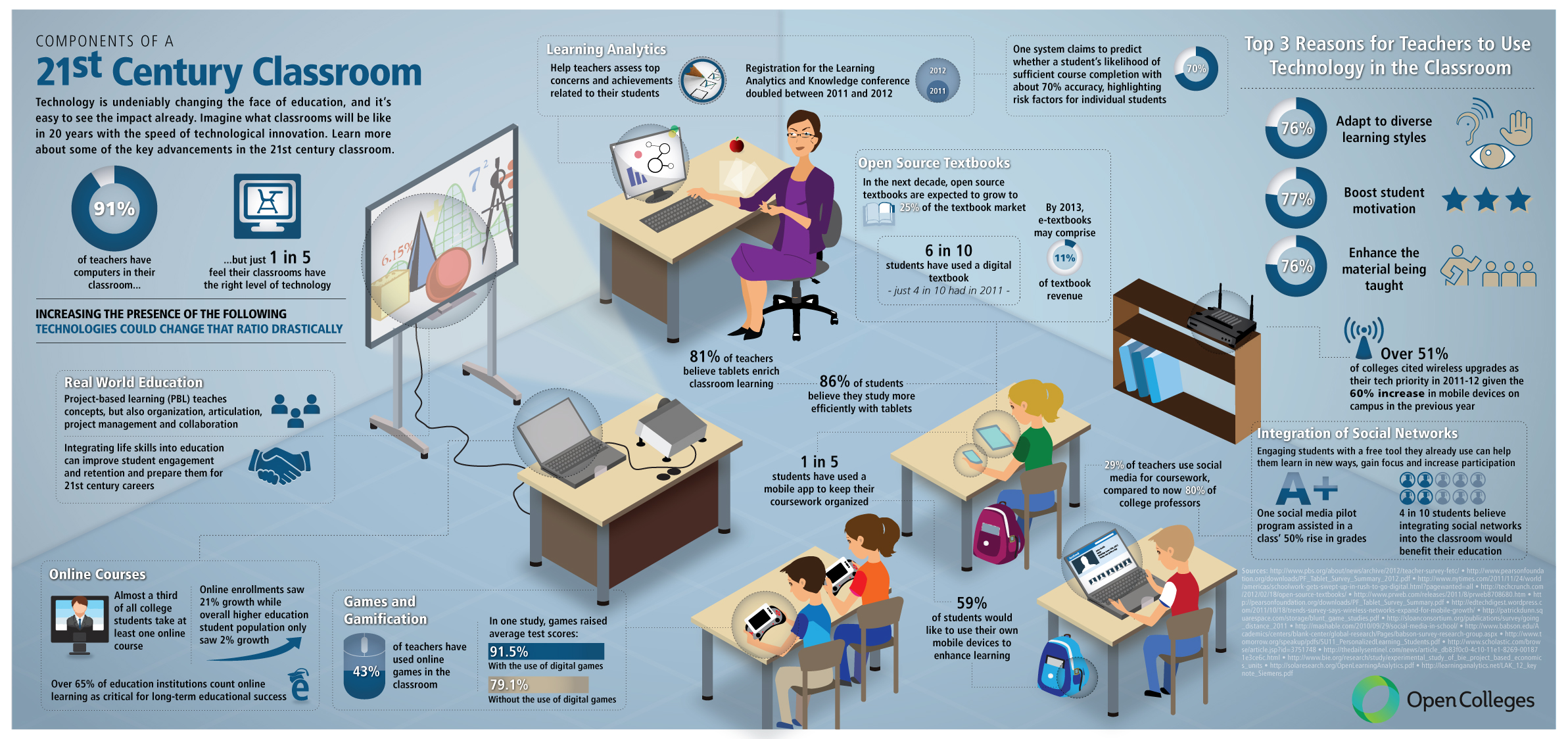examples of technology in the classroom
As technology continues to advance, it has started a revolution in the education sector. Gone are the days when classrooms consisted of simple blackboards, chalk, and textbooks. Nowadays, technology is being used to enhance learning and improve the effectiveness of teaching techniques.
Using Technology in the Classroom: Benefits and Examples

Abstract
Technology has made its way into modern classrooms, providing students and teachers with innovative tools that enhance learning, encourage participation, and simplify complex topics. The use of technology in the classroom can be traced back to the 19th century when the chalkboard, pencil, and textbook were invented. In the 1940s and 50s, educational films, filmstrips, and overhead projectors were introduced. In the 1990s, computer-based instruction started gaining popularity, and the internet became a permanent feature in classrooms just a few years later. Today, technology continues to transform the learning process and improve the educational experience.
Introduction
As technology has evolved, so has its role in education. The use of technology in the classroom has moved from being a luxury to a necessity. In the past, technology was an optional tool used by only a few teachers, but today, it is an integrated aspect of many education systems. The widespread adoption of education technology has provided significant benefits to students, including the ability to access information quickly, collaborate with peers, and engage in interactive learning. This post will explore the ways in which technology has impacted the education sector and provide examples of some modern classroom technologies.
Benefits of Using Technology in Education
The benefits of using technology in education are numerous and far-reaching. Here are just a few of the most significant advantages:
- Improved Access to Information: With the internet and search engines, students now have unlimited access to information on any topic. They can use websites like Wikipedia and Google to explore a range of subjects and gain a deeper understanding of them. Teachers too can explore various resources online to improve the quality of their lectures.
- Enhanced Learning Experience: Technology allows students to interact with the material they are studying in a more interactive and engaging way. For example, e-learning courses enable students to study at their own pace and access resources anywhere at any time. 3D visualization tools allow students to explore complex topics like anatomy and geography in ways that were not previously possible.
- Improved Collaboration: Technology has made it easier for students to collaborate on projects, share notes, and participate in group discussions without needing to be physically present. Collaboration technology like Zoom, Microsoft Teams, and Slack have made it effortless for students and teachers to meet virtually and exchange information effectively.
- Increased Efficiency and Productivity: From smartphones to tablets, technology has enabled students to complete tasks more efficiently and quickly. They can easily take notes, store data, and complete assignments faster than ever before.
Examples of Modern Classroom Technology

Here are some of the most popular and innovative technologies used in modern classrooms today:
1. Interactive Whiteboards
Interactive whiteboards are a staple in modern classrooms, replacing traditional whiteboards, chalkboards, and flipcharts. They are often coupled with projectors and are touch-sensitive, allowing teachers to draw, write, highlight, and erase content on them.
2. Mobile Devices
Mobile devices like laptops, tablets, and smartphones have become ubiquitous in modern classrooms. These devices enable students to easily access the internet, take notes, collaborate with peers, and complete assignments away from the class.
3. E-Books and Online Resources
E-books and online resources have replaced print textbooks in many schools. This is because e-books enable students to access information easily and quickly without relying on traditional textbooks. E-books are also more cost-effective than purchasing textbooks.
4. Learning Management Systems
Learning Management Systems (LMS) are used to manage course materials, assignments, and grading in many schools. LMS platforms like Blackboard, Canvas and Moodle provide teachers with a centralized platform to manage student learning while also providing students a platform to access resources.
5. Gamification
Gamification, turning learning into a game-like experience, has emerged as a popular trend in modern classrooms. Gamification often employs interactive technologies like virtual and augmented reality to create an engaging learning experience.
Conclusion
In conclusion, technology is a game-changer in modern education. It is transforming how we learn and how we teach. As we have seen in this post, the benefits of technology in the classroom are numerous, including improved efficiency, collaboration, access to information, and enhanced learning experience. Going forward, it is essential that we continue to use technology to enhance the educational process and equip students with the skills they need to succeed in the 21st century.

Source image : www.communicationstudies.com

Source image : hubpages.com

Source image : www.classcraft.com






